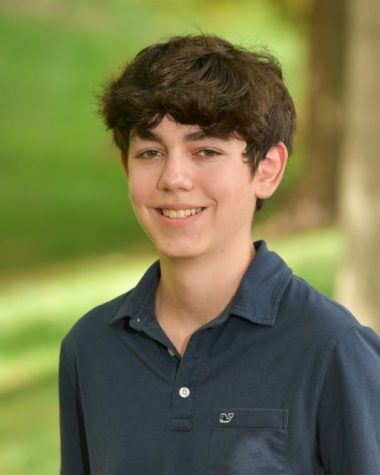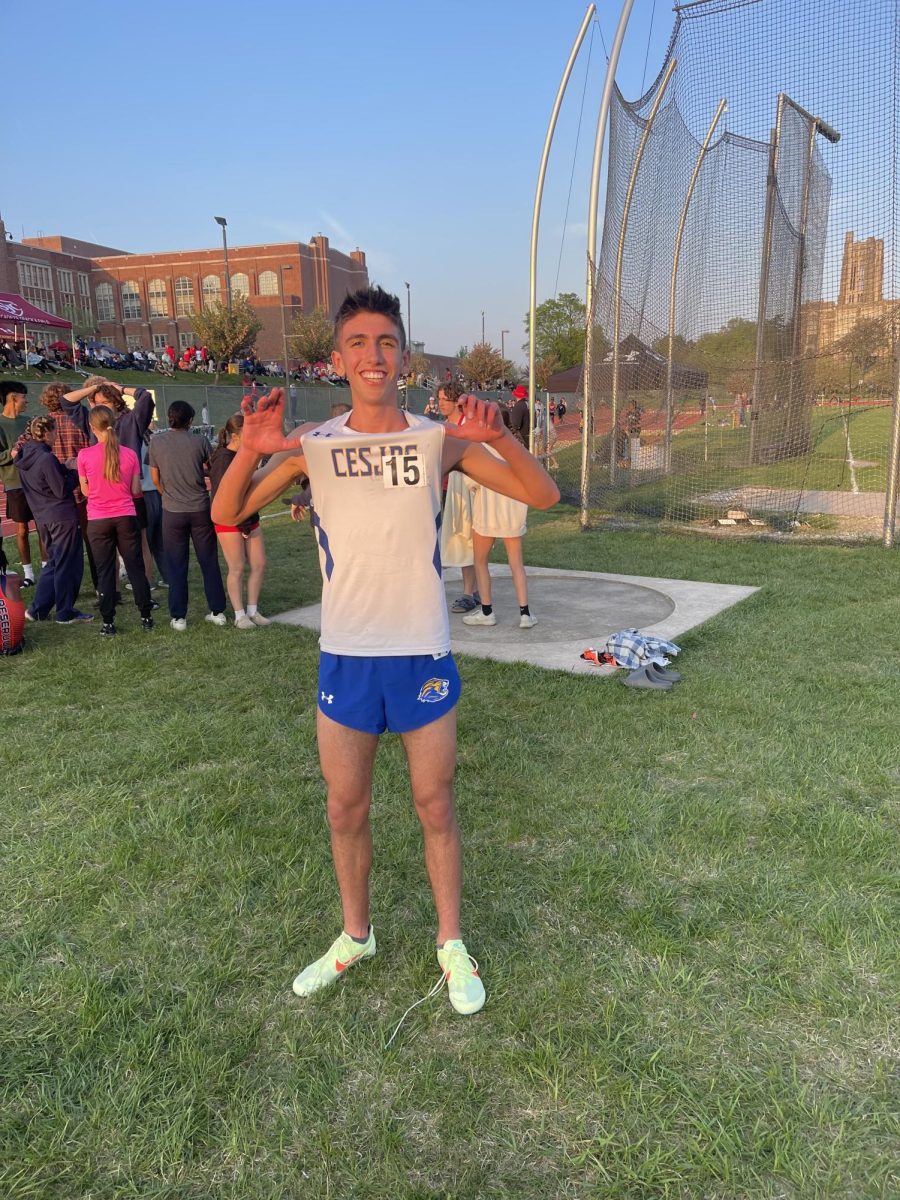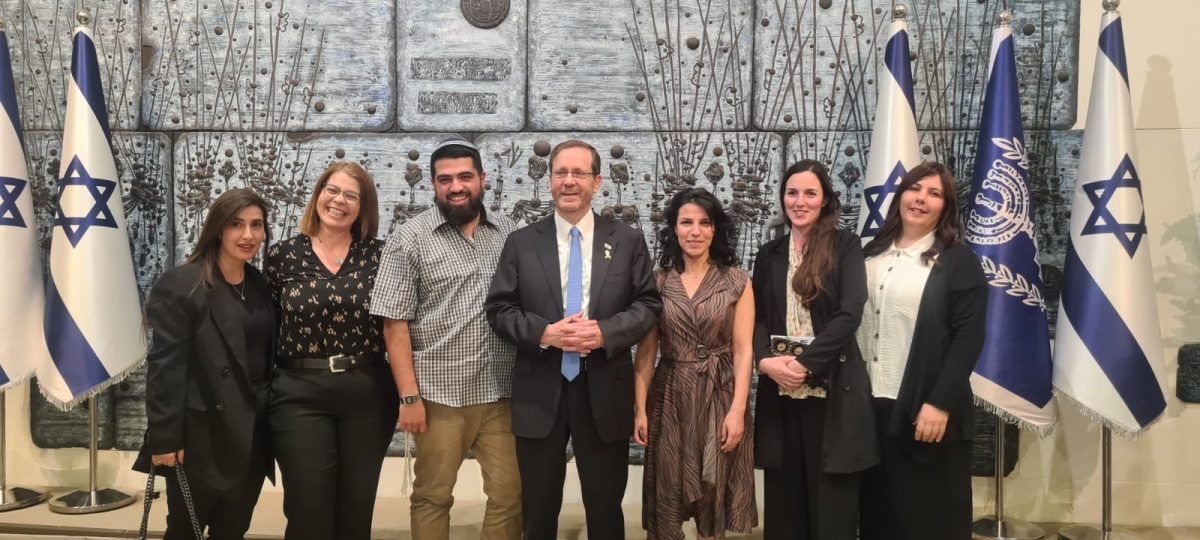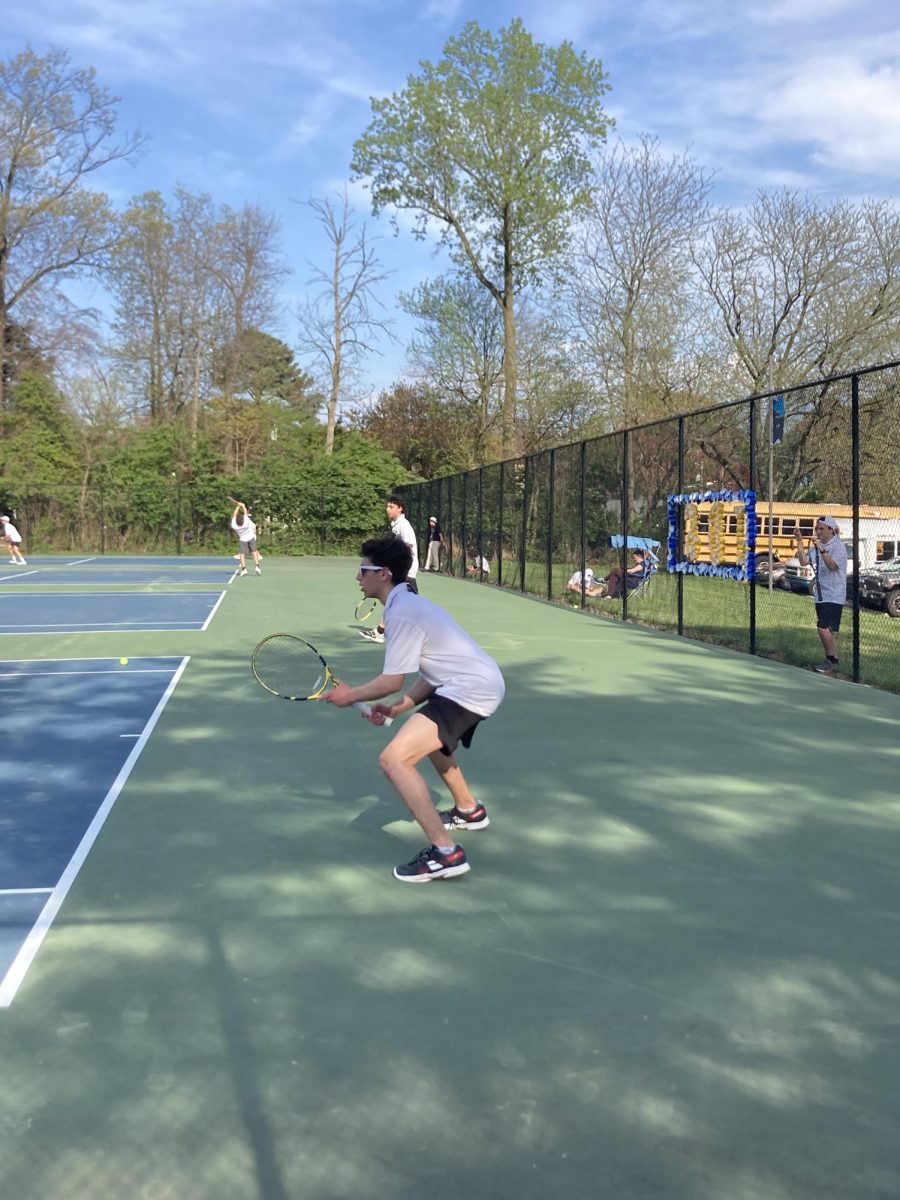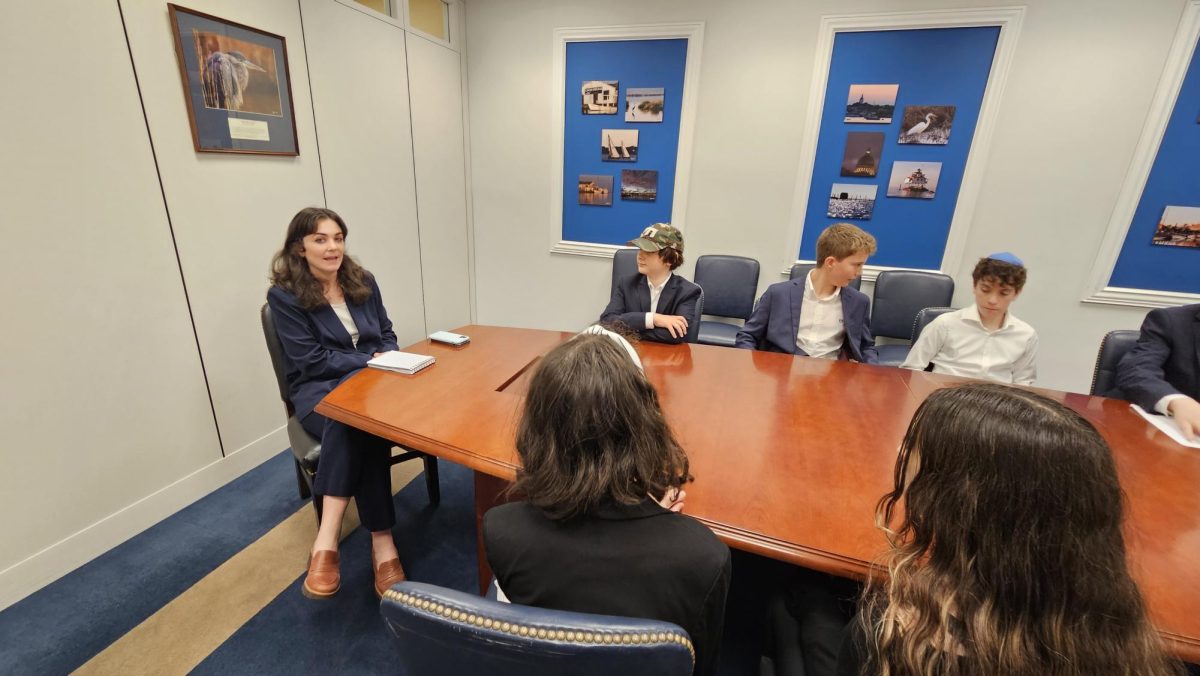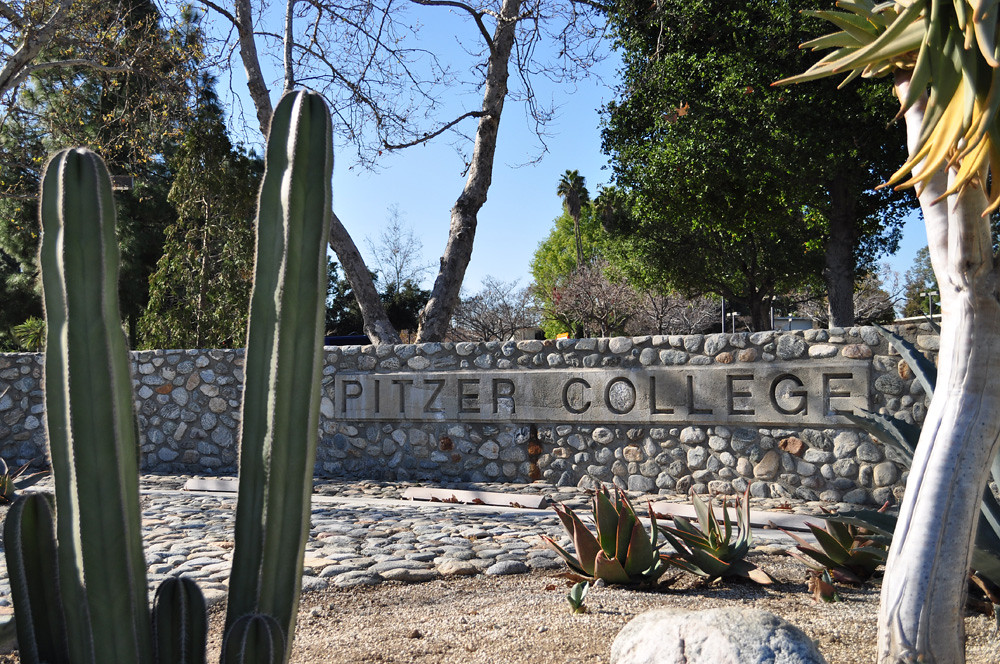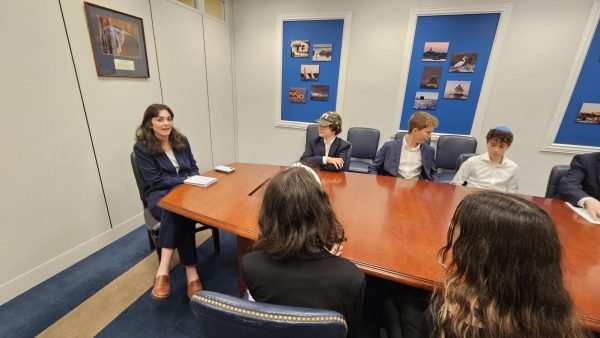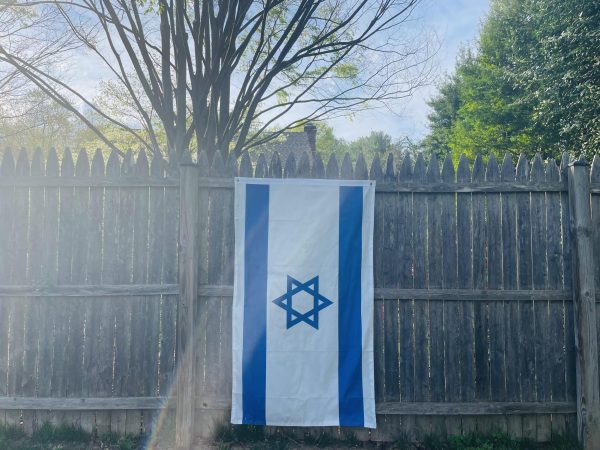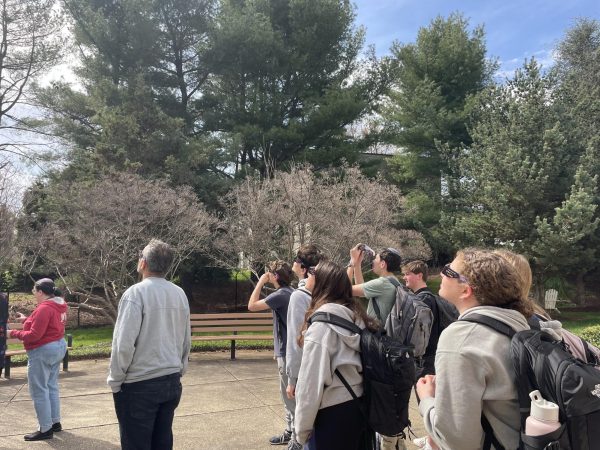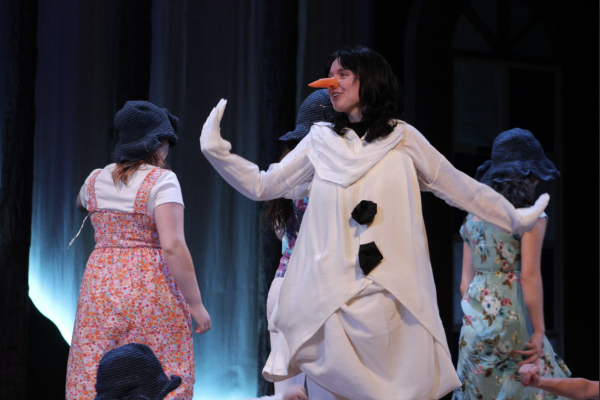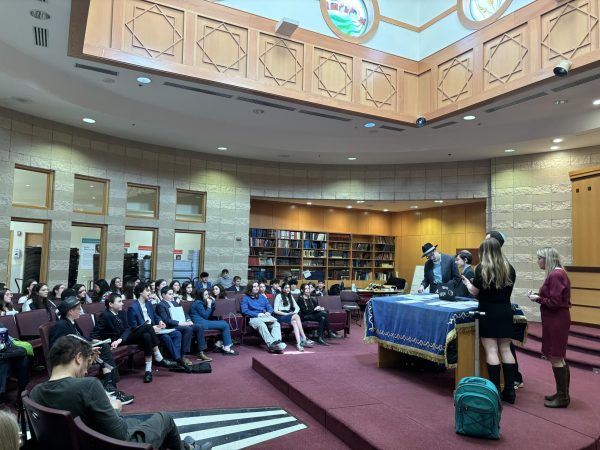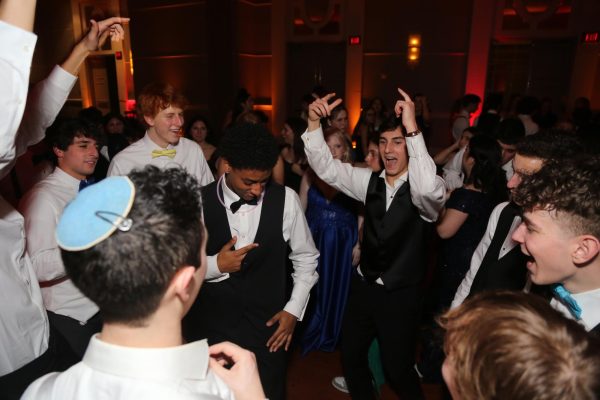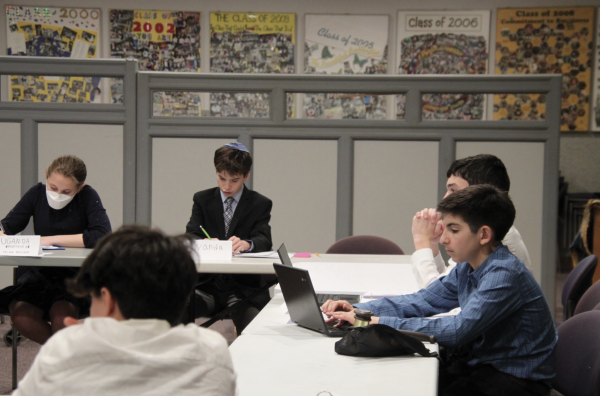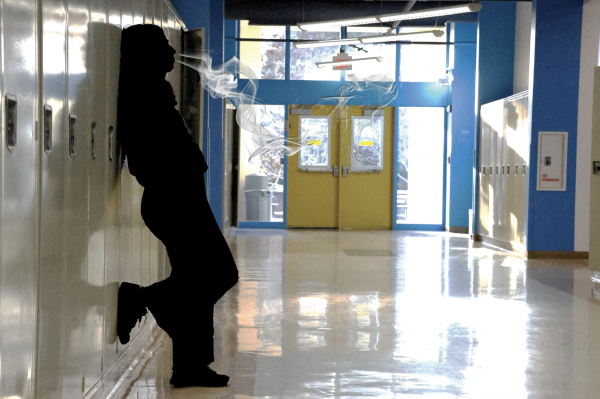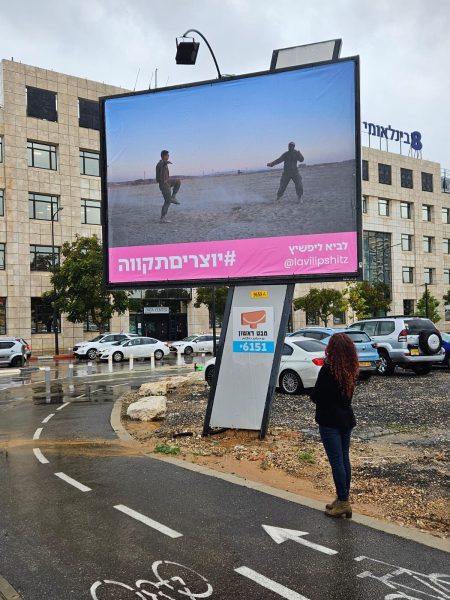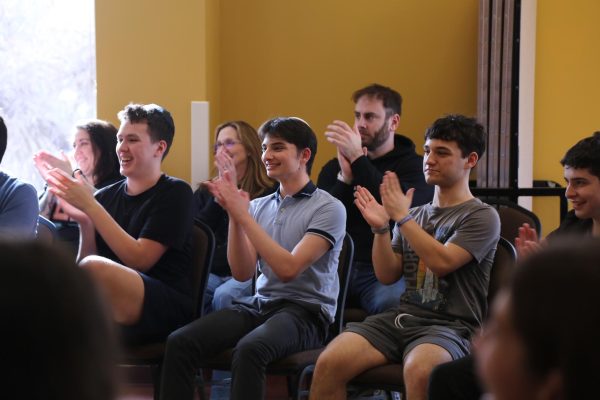Eighth-graders’ STEM device showcased in international Cadena Initiative competition
photo courtesy of Samantha Eidelman
Eighth-graders Remy and Samantha Eidelman present their prototype at the international Cadena Initiative competition.
May 23, 2019
Eighth-graders Remy and Samantha Eidelman traveled to Mexico with Upper School STEM Coordinator Cassandra Batson to compete in the international Cadena Initiative competition this past weekend.
Students in the Cadena Initiative elective had to design prototypes of devices meant to assist victims during natural disasters and then compete in a regional competition against Melvin J. Berman Hebrew Academy to see who would advance to the competition in Mexico. The Eidelmans, who beat Melvin J. Berman Hebrew Academy, were among 16 other teams the U.S. and Israel that also advanced to the competition in Mexico.
With the help of fellow classmates and Computer Science teacher Rustom Meyer, the Eidelmans 3D-designed and coded a prototype that is meant to aid those who are stuck or incapacitated during a natural disaster.
“Our design is a device that helps people that are trapped [in situations] like after an earthquake that are found by rescuers. … It is called the FindMeDisaster and it makes rescuers more efficient,” Remy said.
Once someone in need presses a button on the device, it waits ten seconds before it sounds an alarm, alerting potential rescuers that there is someone who needs help nearby.
Designing and building the device all by themselves took the Eidelmans 30 hours and three different prototypes before they were able to create a working model.
“Mr. Meyer really helped us do the design. He helped me make the actual board, and we had to put wires on it and get the speakers to work,” Remy said. “I had to spend a long time coding the board to actually work, … but it was very exhilarating when it finally worked.”
When the Eidelmans’ classmates heard that the Eidelmans were going to Mexico, they helped them with the logistics, the design and the coding of the prototype.
“It was definitely a team effort,” Batson said. “Their classmates split up into committees to help them in different ways. Mr. Meyer, Mrs. Strausberg [and] their parents all helped. It was a huge effort and it all worked out.”
Although the Eidelmans did not win the competition in Mexico, the winner’s prototype, called an Automated System Locator of Lives Before Earthquakes (S.A.L.V.A.S.), will be mass produced and used in real natural disasters. The S.A.L.V.A.S., created by the team from Costa Rica, is “a device that counts the amount of people that go in and out of a building so that in the event of an earthquake and a building collapses, rescuers will know how many people from that building there are to save,” according the Cadena Initiative Facebook page.
This is Batson’s first year collaborating with the Cadena Initiative organization and teaching the Cadena Initiative elective. Because of its success, she hopes to continue teaching it to more students in the future.
“A lot of the feedback I got from students definitely makes me wonder how I will do it differently next year. I think a lot of them said the scaffolding I provided them helped get them to the deadline, but I think time is the biggest thing,” Batson said. “Next year, if we could start earlier, that would be the best.”
Samantha said she learned a lot from her experience in the Cadena Initiative elective and is glad she took the class.
“It taught me how to really use the engineering and design process and also how to be persistent with work so that everything eventually works out even if it is very close to the deadline. Like a week ago, we had no idea what to do and we didn’t think it was going to happen,” Samantha said. “But everything came together and we were very proud when it worked.”



